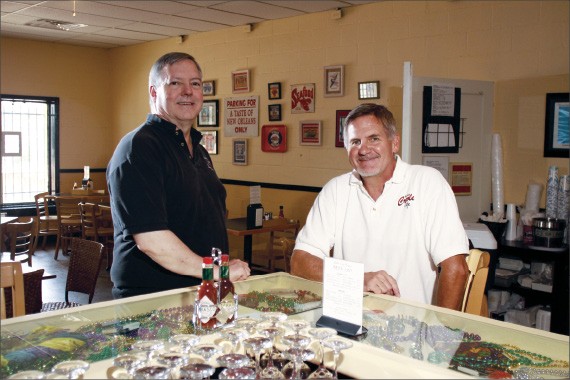Sometimes my instincts are wrong.
“I don’t think I can sit through Rent again,” I grumbled to
my wife last week on the night Jonathan Larson’s Pulitzer Prize-winning
musical made its regional premiere at Playhouse on the Square.
We’d chosen to miss the play’s opening to take in an art exhibition
in a beautifully restored building on Front Street where we lived in
the mid-1990s when the neighborhood wasn’t nearly so nice and the roof
was falling in. It was the perfect clubhouse for a bunch of artists,
actors, writers, and musicians who functioned as an extended family and
didn’t mind working, playing, and crashing in near-squalor.
Watching all the neatly dressed patrons milling about at the art
opening reminded me how much I’d disliked Larson’s Friends-era
mashup of Puccini’s La Bohème and The Big Chill,
which I remembered as a silly cartoon-sized soap opera exploiting the
same indie-artist stereotypes who used to hang out at my grimy former
studio.
The touring Broadway productions of Rent have become
unimaginably precious, but in its leap to the regional stage, the show
may have evolved for the better. Playhouse on the Square’s up-tempo
take on this downbeat musical about artists and junkies who decide not
to pay for their crummy Alphabet City apartments is louder,
harder-edged, and more emotionally honest than anything Memphis
audiences have seen from this script. Director/choreographer Courtney
Oliver plays things straight without glossing over or romanticizing the
musical’s grittier elements, and she gets a show that recaptures a bit
of Rent‘s original spirit.
Alvaro Francisco practically emits his own light as Angel, the dying
transsexual who teaches the rest of the cast how to live. Francisco has
done his share of skirt roles this season, but this fabulousness was
worth waiting for.
Veteran techie Rory Dale is still new to acting at Playhouse, and
he’s a little stiff around the edges as Roger, the play’s spiky-haired
wannabe rock star who has a turbulent relationship with his
junkie-stripper girlfriend, Mimi. But Dale knows his way around the
guitar, and when he sings, he sounds like a kid who grew up pretending
to be a rocker — not pretending to be an American Idol
contestant. That makes a big difference.
Lili Thomas, Matt Reed, David Ryan, and Marcus Gill round out an
excellent ensemble.
Through July 26th
Wicked Good
I seldom enjoy a long-running Broadway shows once they’ve become
famous for being long-running Broadway shows. That goes double for
tours and triple if the show features cool special effects or humans
dressed up as cute animals. But the Wicked tour, currently
docked at the Orpheum, smashes all expectations. It’s energized and
fresh, and it boasts a stellar cast that won’t be upstaged by a bunch
of technical wizardry.
Wicked is a sophisticated steampunk-inspired prequel to
The Wizard of Oz that puts preconceived ideas about good and
evil on trial as it tells the story of two old friends: Glinda the Good
Witch and Elphaba, the Wicked Witch of the West.
Helene Yorke’s dynamic, bubble-headed Glinda cracks up her castmates
who break character to laugh but never miss a beat. Marcie Dodd is her
equal in every way, making Elphaba a nerdy green-skinned girl next door
with a voice so big and inviting it’s actually more impressive than the
gravity-defying stunt at the end of act one.
Wicked is a big show about minute details, from the finely
crafted set and costumes to the uniformly quirky and commanding
cast.
 justin fox burks
justin fox burks  justin fox burks
justin fox burks